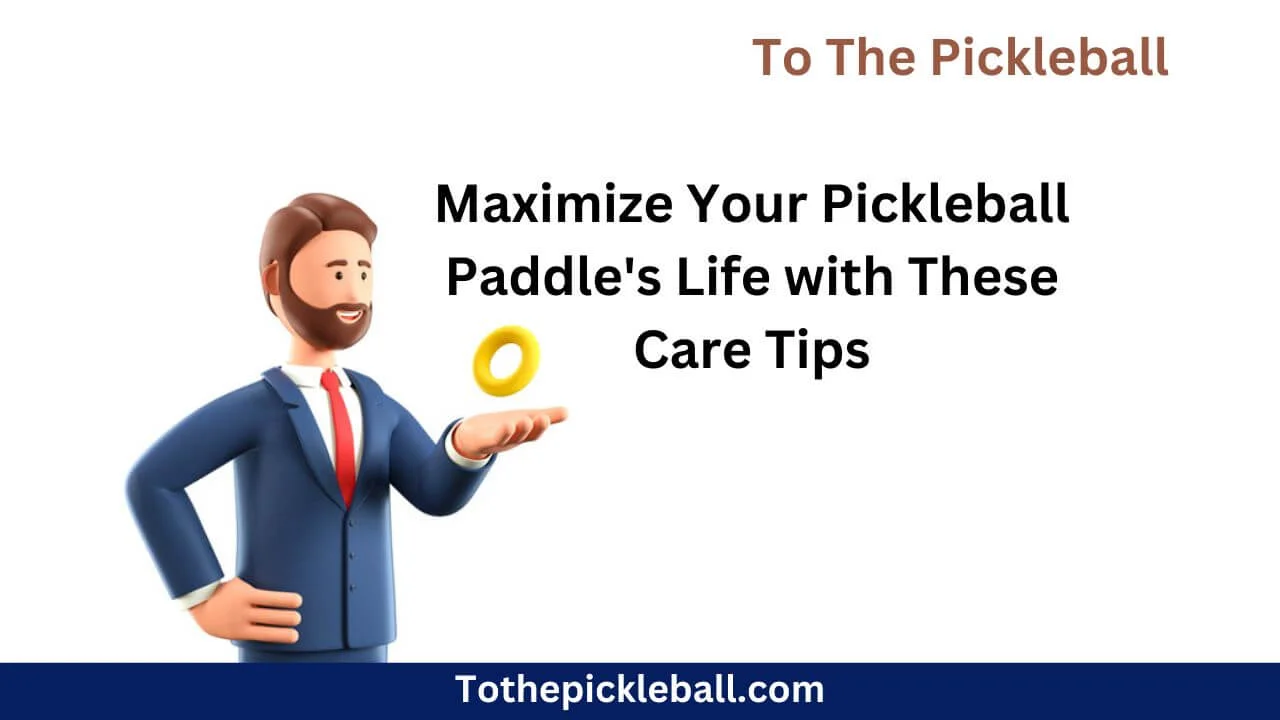

7 tips to take care of your pickleball paddle:
1. Store your paddle properly
Always store your paddle in a protective cover or case to keep it safe from scratches or other damage.
2. Avoid extreme temperatures
Do not expose your paddle to extreme temperatures, such as leaving it in a hot car or in freezing temperatures.
3. Keep your paddle clean
Wipe your paddle down with a damp cloth after each use to remove dirt, sweat, and other debris.
4. Avoid harsh chemicals
Avoid using harsh chemicals or abrasive materials on your paddle as they can damage the surface.
5. Don’t hit hard objects
Avoid hitting your paddle against hard objects like the ground or the net post, as it can cause cracks or other damage.
6. Replace worn-out grips
Replace the grip of your paddle if it becomes worn-out or starts to lose its tackiness.
7. Don’t share your paddle
Avoid sharing your paddle with other players, as it can lead to damage and wear and tear.
ADDITIONAL TIPS
Taking care of your pickleball paddle is essential to prolong its life and ensure it performs at its best. Here are some additional tips to help you take care of your pickleball paddle:
- Use a protective cover: In addition to storing your paddle in a protective cover or case, you can also use a cover during play to protect it from damage during accidental drops or hits.
- Choose the right surface: Pickleball paddles are designed for specific playing surfaces, such as indoor or outdoor courts. Using your paddle on the wrong surface can lead to damage and impact its performance.
- Use a paddle cleaner: To keep your paddle in top condition, consider using a specialized paddle cleaner. These products are specifically formulated to remove dirt and grime without damaging the paddle’s surface.
- Replace damaged parts: If you notice any damage to your paddle, such as cracks or chips, it’s important to address it as soon as possible. Consider replacing damaged parts, such as the edge guard or face, to prevent further damage.
- Avoid excessive moisture: Moisture can be harmful to your pickleball paddle. Avoid leaving your paddle in a damp environment or playing in wet conditions without proper protection.
- Store your paddle correctly: When storing your paddle, make sure to keep it in a dry, cool place away from direct sunlight. Avoid storing it in a place where it can be knocked over or stepped on.
- Don’t over-tighten the grip: When replacing the grip on your pickleball paddle, be careful not to over-tighten it. This can cause the grip to stretch or tear, leading to a loss of control during play.
By following these tips, you can help ensure that your pickleball paddle performs at its best and lasts for many games to come. Remember to inspect your paddle regularly for signs of wear and tear and address any issues promptly. With proper care, your pickleball paddle can provide years of enjoyment on the court.
benefits of taking care of your pickleball paddle
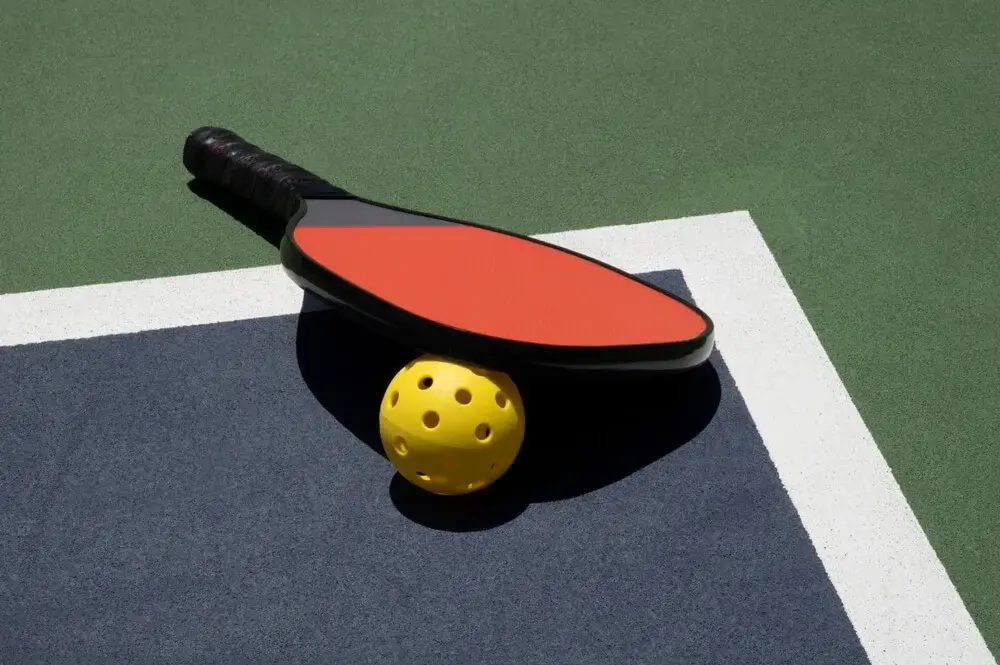
Taking care of your pickleball paddle is crucial for a number of reasons. First and foremost, it can prolong the lifespan of your paddle. By storing it properly, avoiding extreme temperatures, and keeping it clean, you can prevent damage and ensure that it lasts for many games to come. This can save you money in the long run, as you won’t need to replace your paddle as frequently.
Additionally, taking care of your pickleball paddle can improve its performance. By keeping it clean, avoiding harsh chemicals, and choosing the right playing surface, you can maintain its grip and responsiveness, which can help you play better and achieve more consistent results on the court.
Proper maintenance can also help you identify and address issues with your paddle before they become serious. For example, if you notice any cracks or chips, you can take steps to repair them before they worsen and cause more extensive damage. This can prevent the need for costly repairs or replacement down the line.
Overall, taking care of your pickleball paddle is a smart investment in both the short and long term. By following some basic maintenance tips, you can ensure that your paddle performs at its best and lasts for many games to come.
mistakes that people make when taking care of their pickleball paddles
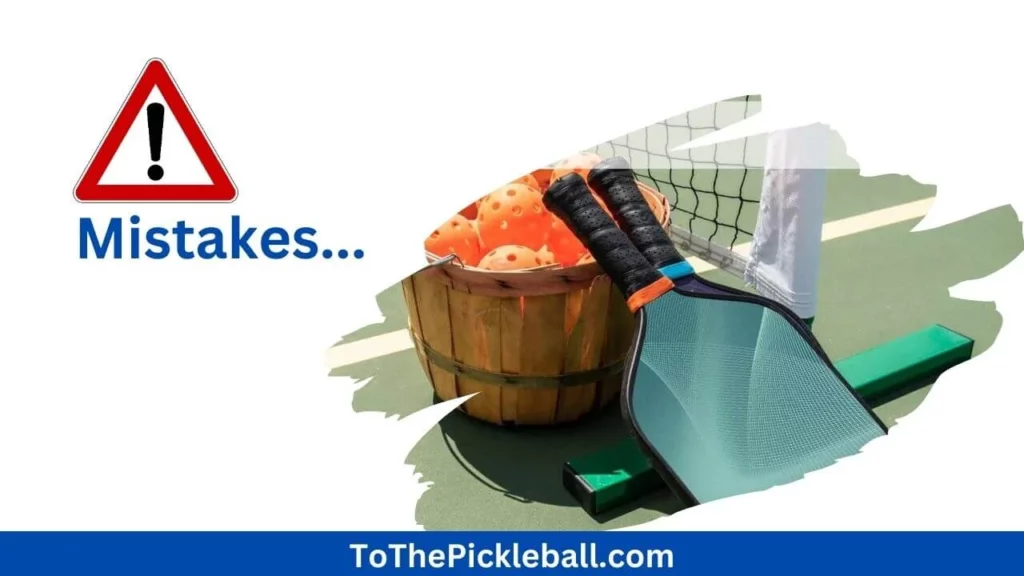

Here are some common mistakes that people make when taking care of their pickleball paddles, along with tips on how to avoid them:
- Not cleaning the paddle regularly: One of the most common mistakes is failing to clean the paddle after each use. Over time, dirt, sweat, and other debris can accumulate on the paddle’s surface, causing it to deteriorate. To avoid this, make it a habit to wipe down the paddle after each use.
- Using harsh chemicals: Another common mistake is using harsh chemicals or abrasive materials on the paddle’s surface. This can cause damage and lead to premature wear and tear. Instead, use a mild detergent and water to clean the paddle.
- Storing the paddle improperly: Storing the paddle in extreme temperatures, such as in a hot car or in freezing temperatures, can cause damage. Additionally, storing the paddle in a damp environment or leaving it in direct sunlight can also cause damage. To avoid these mistakes, store the paddle in a dry, cool place away from direct sunlight.
- Using the wrong grip size: Using a grip that is too small or too large can cause discomfort and lead to a loss of control during play. To avoid this, make sure to select a grip that is the correct size for your hand.
- Not replacing worn-out grips or damaged parts: Over time, the grip on the paddle may become worn-out or damaged parts may need to be replaced. Failing to address these issues promptly can lead to further damage and a decrease in performance. To avoid this, make sure to inspect your paddle regularly for signs of wear and tear and replace any damaged parts promptly.
By avoiding these common mistakes and following proper care and maintenance techniques, you can help ensure that your pickleball paddle lasts for many games to come.
how to replace worn-out grips or damaged parts of the paddle
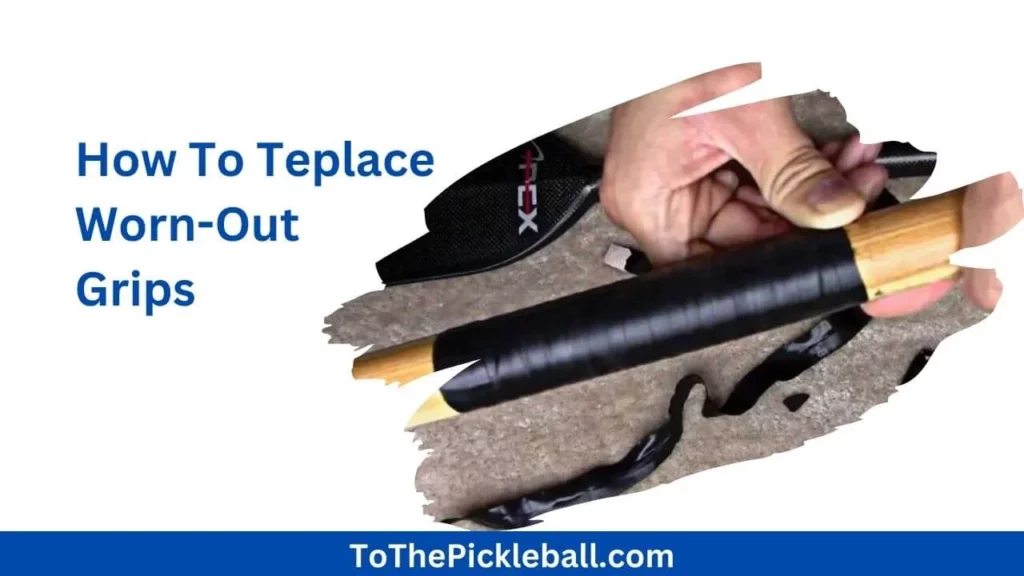

Replacing worn-out grips or damaged parts of a pickleball paddle is a simple process that can help extend the life of your paddle. Here is a step-by-step guide on how to replace worn-out grips or damaged parts of the paddle:
Replacing the grip:
- Remove the old grip: Use a razor blade or scissors to cut the old grip off the handle of the paddle. Be careful not to damage the handle or any other parts of the paddle.
- Clean the handle: Use a damp cloth to wipe down the handle and remove any residual adhesive or dirt.
- Apply grip adhesive: Apply grip adhesive to the handle of the paddle. Use a small amount and make sure to spread it evenly.
- Apply the new grip: Start at the bottom of the handle and wrap the new grip around the handle, making sure to keep it tight and free of wrinkles. Continue wrapping until you reach the top of the handle.
- Trim the excess grip: Use scissors or a razor blade to trim any excess grip from the top and bottom of the handle.
Replacing damaged parts:
- Identify the damaged part: Inspect your paddle and identify the damaged part that needs to be replaced.
- Remove the damaged part: Use a screwdriver or pliers to remove the damaged part from the paddle. Be careful not to damage any other parts of the paddle.
- Clean the area: Use a damp cloth to clean the area where the damaged part was removed. Make sure to remove any residual adhesive or dirt.
- Apply adhesive: Apply adhesive to the replacement part and the area where it will be attached.
- Attach the replacement part: Attach the replacement part to the paddle and hold it in place for a few seconds to allow the adhesive to set.
- Allow the adhesive to dry: Wait for the adhesive to dry completely before using the paddle again.
By following these simple steps, you can replace worn-out grips or damaged parts of your pickleball paddle and extend its life. Always make sure to use the right tools and be careful not to damage any other parts of the paddle during the process.
how to choose the right pickleball paddle
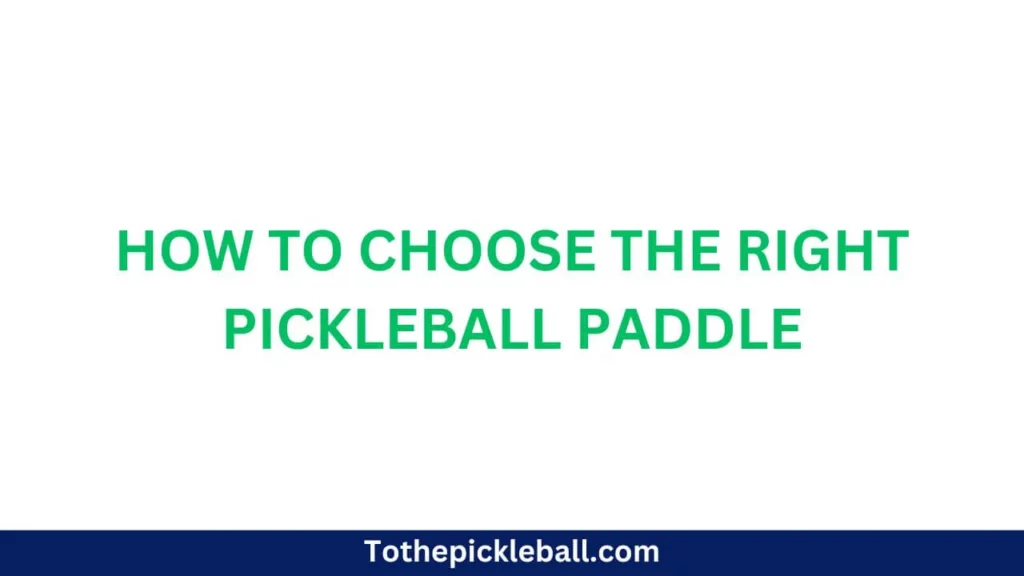

1. Consider your playing style
Different paddles are designed for different playing styles. If you’re an aggressive player who likes to hit hard, a heavier paddle with a larger sweet spot may be better for you. On the other hand, if you prefer a finesse game, a lighter paddle with a smaller sweet spot may be more suitable.
2. Determine your skill level
Your skill level can also affect your choice of paddle. If you’re a beginner or intermediate player, a lighter paddle with a larger sweet spot may be easier to control and help you improve your game. Advanced players may prefer a heavier paddle with a smaller sweet spot for more precision and power.
3. Try before you buy
The best way to find the right pickleball paddle is to try different paddles before making a purchase. Many sporting goods stores have demo paddles available for customers to try out. You can also borrow a friend’s paddle or try one out at a local pickleball club. Testing different paddles will help you determine which one feels most comfortable and effective for your playing style and skill level.
how to adjust the grip size of your paddle
The grip size of your pickleball paddle is an important factor in your comfort and control while playing. If your paddle grip is too small or too large, it can negatively affect your game. Fortunately, adjusting the grip size of your pickleball paddle is a relatively simple process. Here are the steps to follow:
1. Measure your hand size
To determine the appropriate grip size for your pickleball paddle, measure the distance from the tip of your middle finger to the second crease on your palm.
2. Choose the right grip size
Most pickleball paddles come in small, medium, and large grip sizes. Choose a grip size that matches your hand measurement. Keep in mind that the grip should be snug but not so tight that it restricts your movement or causes discomfort.
3. Change the grip
If your paddle has a removable grip, you can simply replace it with a grip of the appropriate size. If your paddle grip is not removable, you can add an overgrip to increase the size.
4. Use grip tape
If you need to decrease the grip size of your paddle, you can use grip tape to create a smaller circumference. Simply wrap the grip tape around the handle until you achieve the desired thickness.
5. Test the new grip
Once you’ve adjusted the grip size of your paddle, take it for a test run to ensure that it feels comfortable and secure in your hand. If necessary, make further adjustments until you find the perfect fit.
By adjusting the grip size of your pickleball paddle, you can improve your comfort, control, and overall performance on the court. It’s a simple process that can make a big difference in your game.






